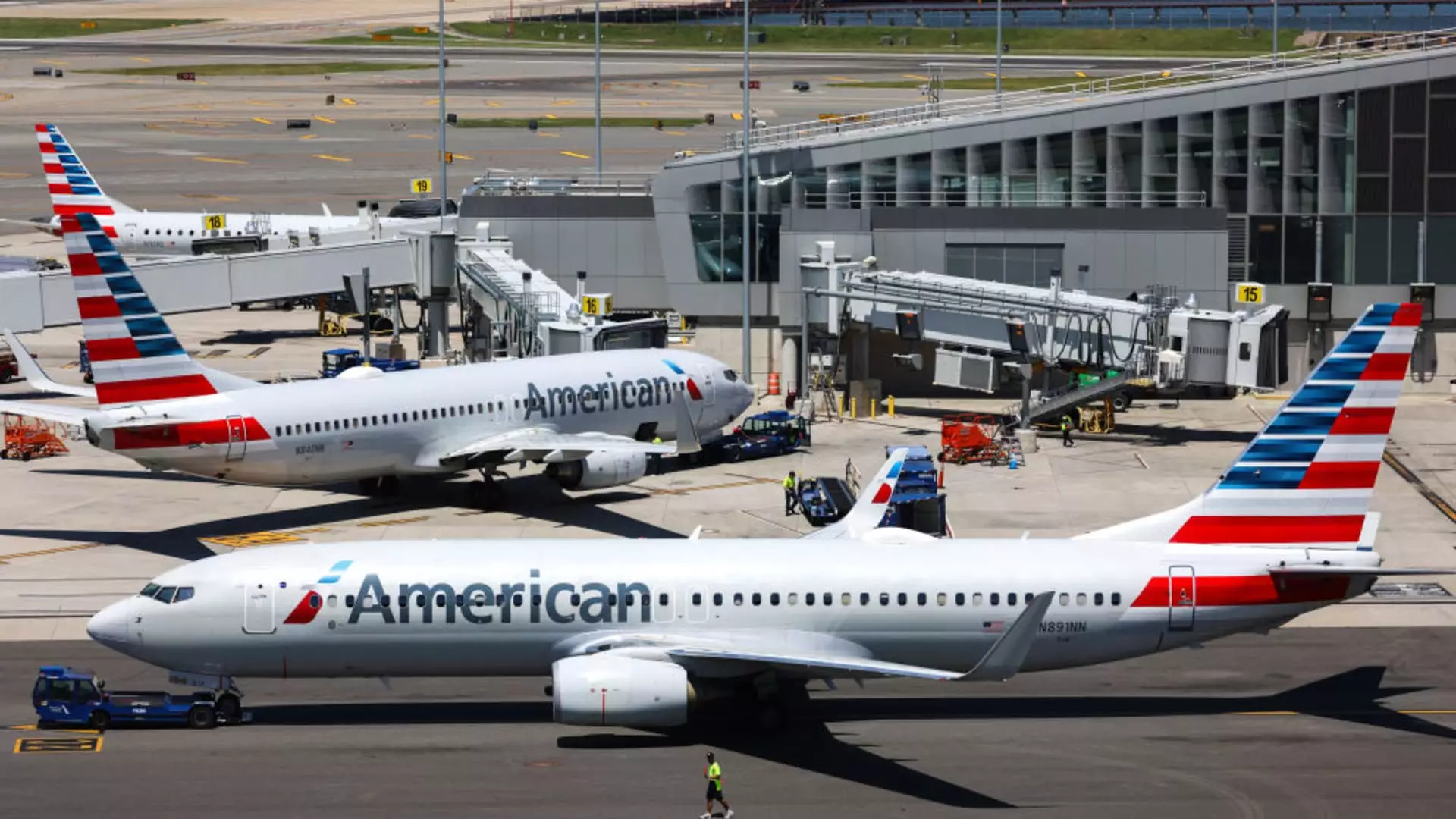The landscape of airline loyalty programs is undergoing a significant transformation, highlighted by American Airlines’ negotiations to establish Citigroup as its exclusive credit card partner. Previously aligned with Barclays since the 2013 acquisition of US Airways, American Airlines is now seeking to consolidate its financial partnerships in a bid to maximize the profitability of its loyalty program. This change illustrates a broader trend in the industry wherein airlines are increasingly directing their focus towards more lucrative arrangements with financial institutions to bolster their revenue streams.
The necessity for these partnerships has become especially clear in light of economic fluctuations and evolving consumer spending habits. Airlines rely heavily on their credit card programs to generate significant revenue—amounting to billions annually—in exchange for offering frequent flyer miles to consumers who utilize their cards. This dependence underscores the importance of establishing a favorable relationship with the right banking partner.
Baltimore’s increasing competition in co-brand credit card deals cannot be overstated. Financial institutions and airlines are now engaged in fierce negotiations, as both parties aim to maximize their share of the revenue generated through credit card operations. In this context, American Airlines is reevaluating its strategic direction, aiming to streamline operations with a single partner rather than juggling multiple relationships.
Industry insiders suggest that by partnering with Citigroup exclusively, American could enhance the financial returns from its AAdvantage program markedly. The emerging negotiations aim to solidify a long-term arrangement that would likely last between seven to ten years, providing Citigroup with ample opportunity to recover investments while potentially increasing customer spending and retention.
Analyzing the Competition: Citigroup vs. Barclays
The current dynamics between Citigroup and Barclays exemplify the competitive nature of co-brand partnerships. Citigroup appears better positioned to secure a leading role in American Airlines’ credit offerings, largely due to its more profitable customer base. Reports indicate that Citigroup’s cardholders tend to have higher spending and lower default rates compared to their Barclays counterparts. This data turns the spotlight on American Airlines’ decision-making process as it intricately considers the profitability and potential growth with its financial partners.
Barclays, on the other hand, is reassessing its strategy following a history of being the lesser partner for American’s credit card business. The airline’s arrangement allowed Barclays limited marketing avenues, primarily restricting it to on-flight solicitations while Citigroup focused on more lucrative channels like direct mail and airport lounge promotions. This structural limitation may have hampered Barclays’ ability to engage customers effectively, propelling American Airlines to explore a more favorable deal with Citigroup.
While negotiations with Citigroup are theoretically appealing, any finalized agreement will be subject to rigorous regulatory scrutiny. Agencies such as the U.S. Department of Transportation and the Consumer Financial Protection Bureau may introduce delays or even obstacles to the deal, particularly if concerns arise regarding competition and market consolidation. American Airlines faces the challenging task of navigating the regulatory landscape while pursuing a partnership that could dramatically shape the future of its loyalty program.
Any potential delays in finalizing the agreement may keep Barclays in the mix longer than anticipated. For American Airlines, the stakes are high as the loyalty program acts as a critical element of its customer retention strategy in an increasingly competitive travel market.
Looking Towards the Future
As the discussions between American Airlines and Citigroup proceed, the outcome remains uncertain. Should the agreement move forward, it would mark a pivotal shift in the airline’s strategy, emphasizing the importance of aligning with a partner that can bolster economic returns for both parties involved.
American Airlines has articulated its commitment to improving the products and services available through its credit card partnerships, indicating a prioritization of customer value. To optimize its operations, the airline must remain astute in understanding market trends and consumer preferences, ensuring that any new arrangement not only meets the present needs but is also sustainable in the long run.
American Airlines’ move to consolidate its credit card partnerships signals a significant shift in the airline’s strategic focus toward securing higher revenue from its loyalty program. While partnerships with financial institutions like Citigroup are fraught with challenges and uncertainties, they also represent opportunities to build robust frameworks that could enhance both customer loyalty and financial returns in an increasingly competitive marketplace.

